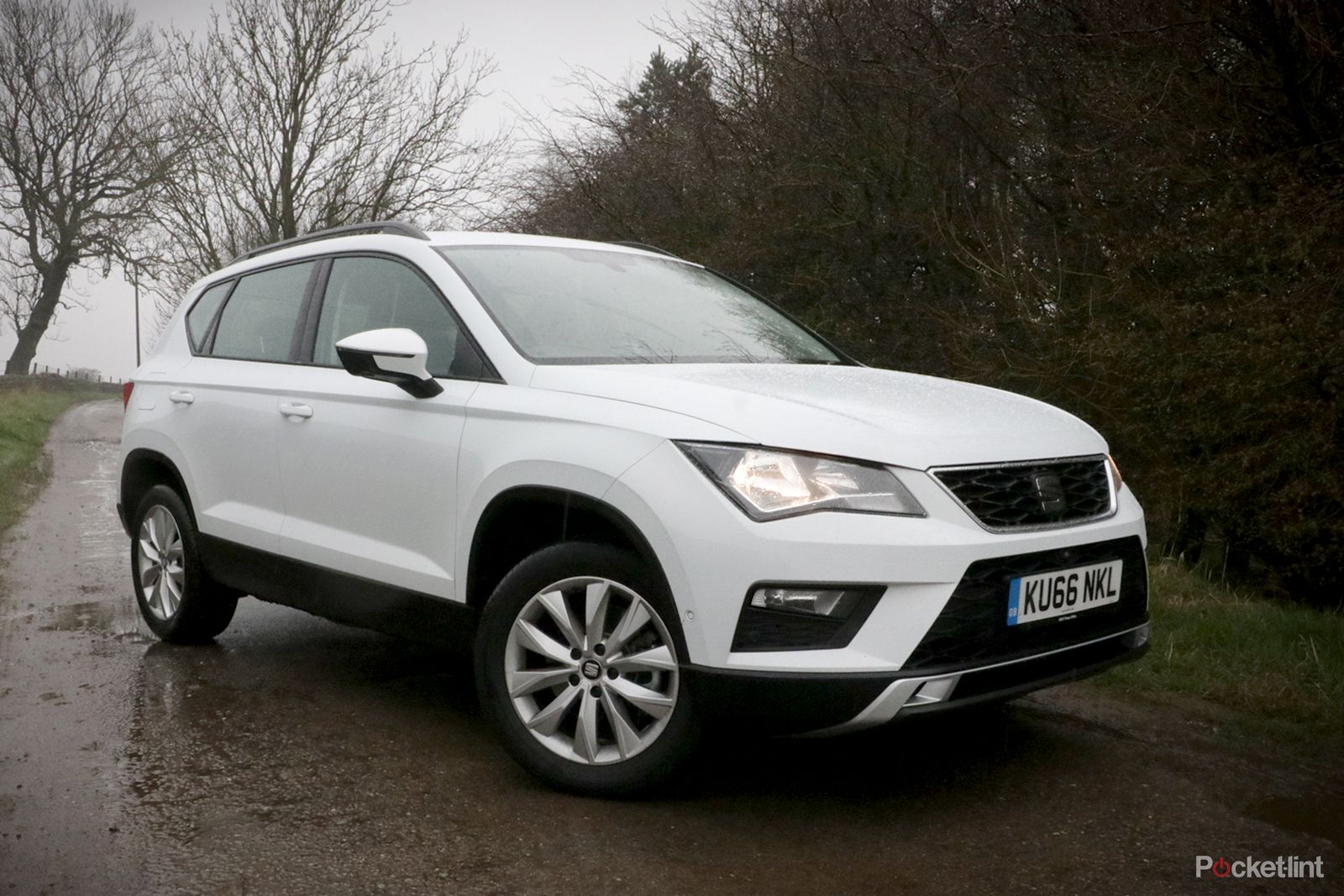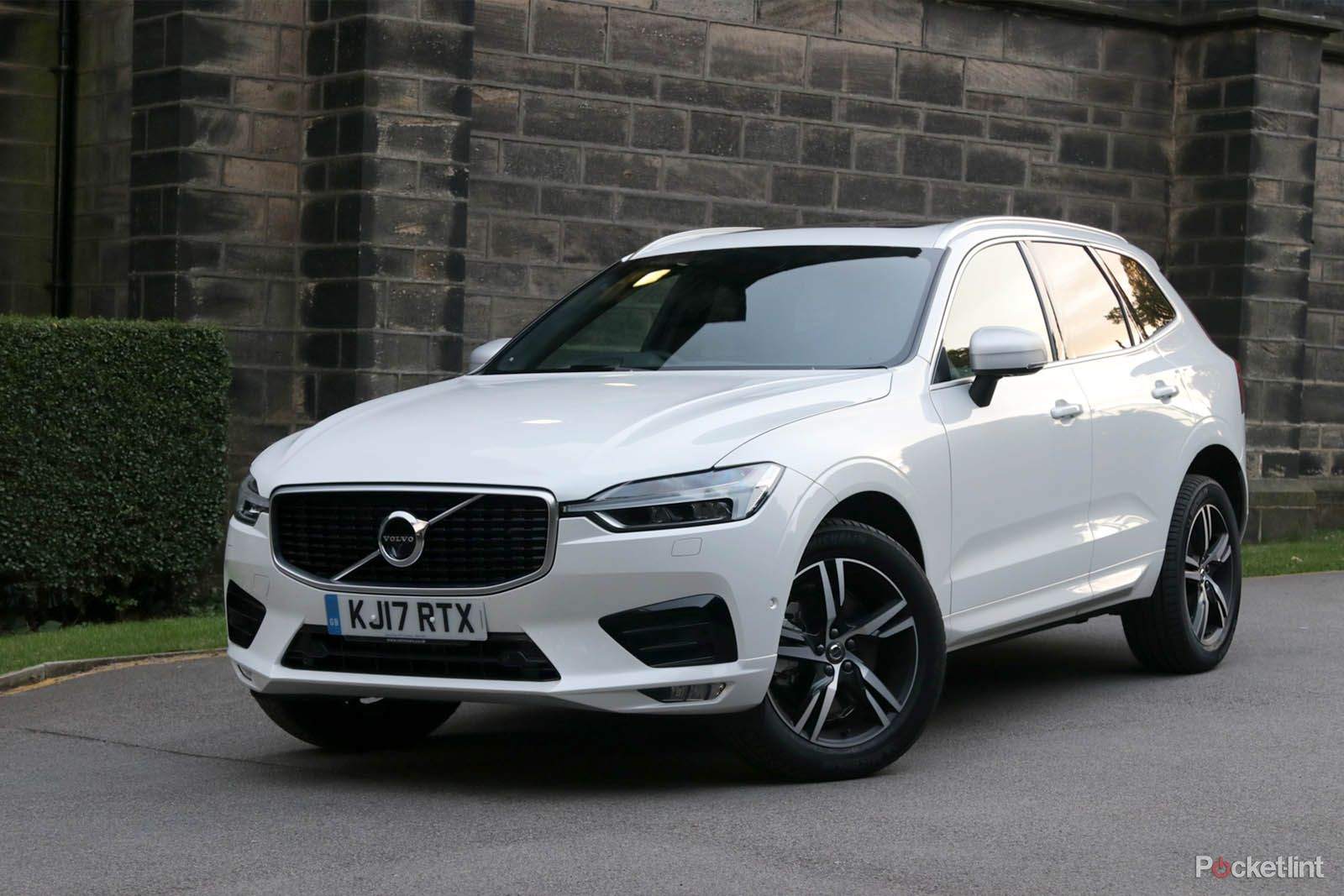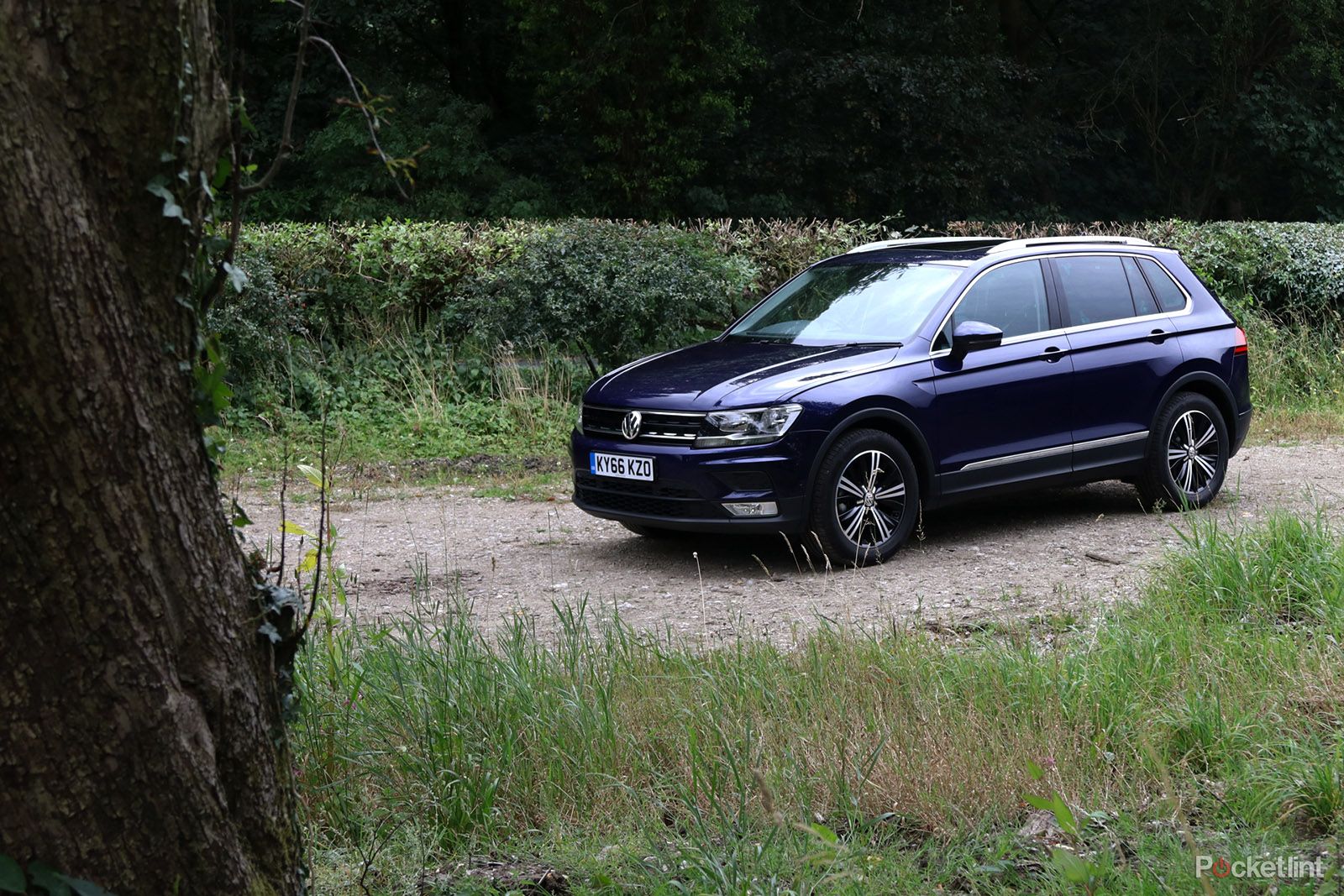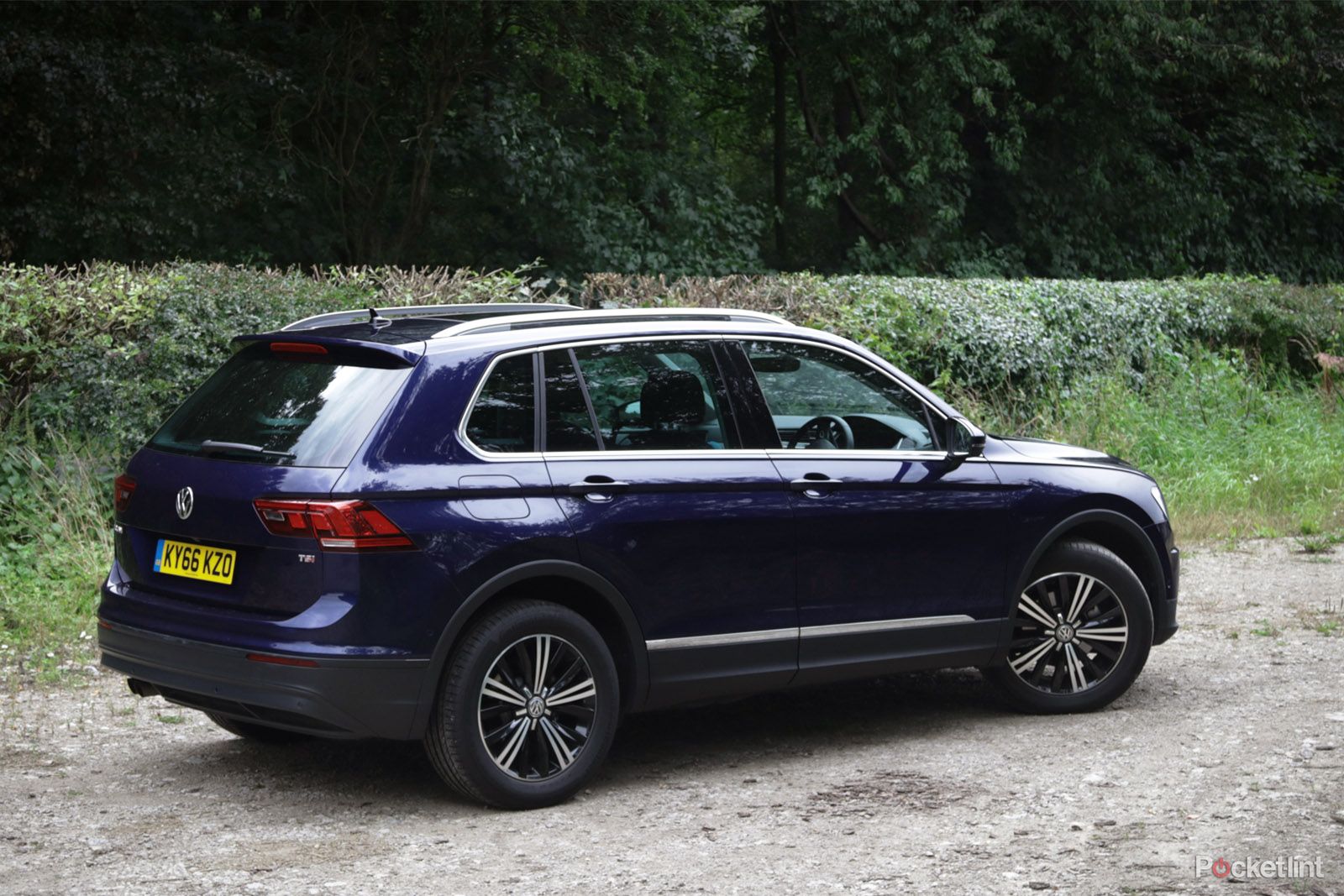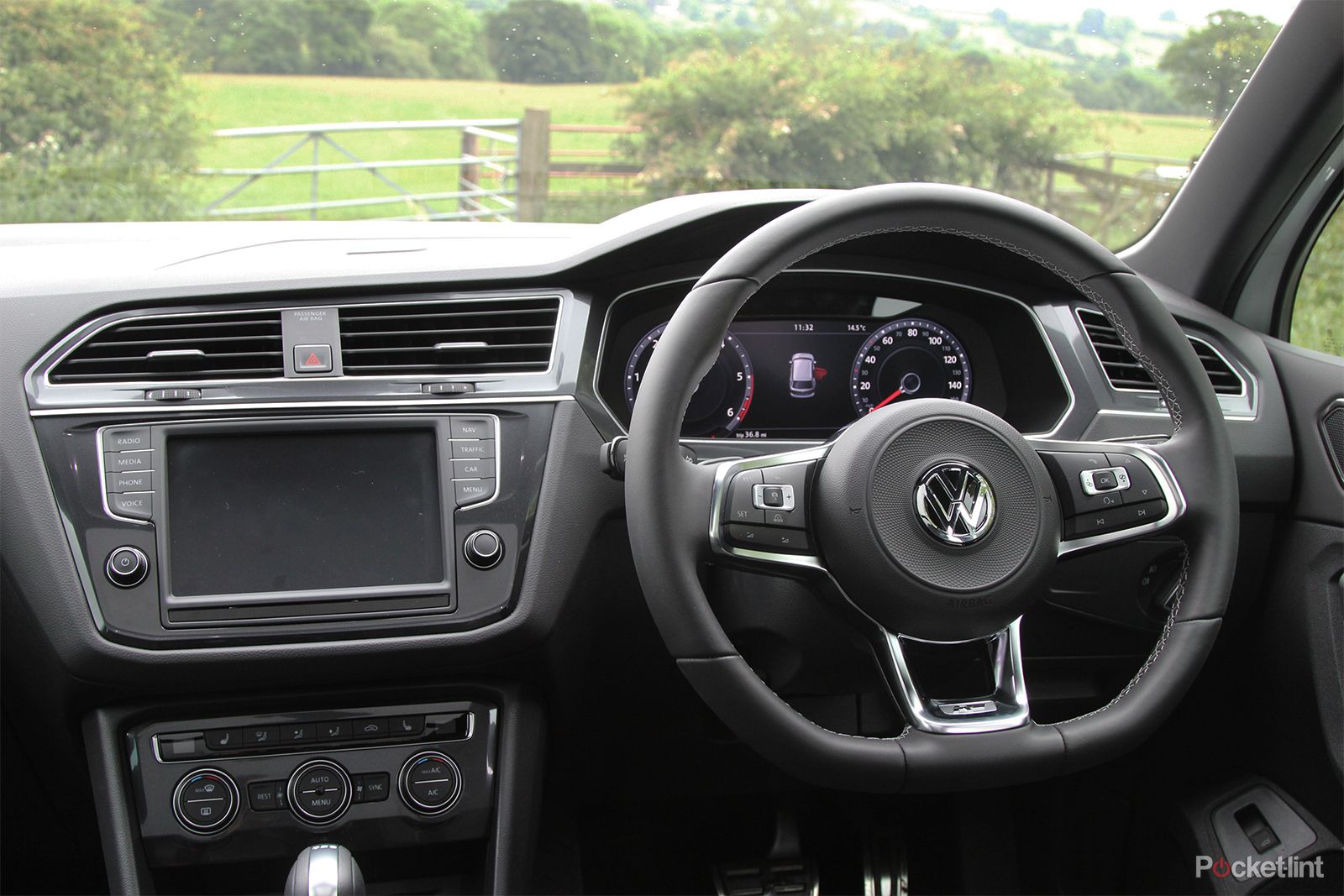You've decided you want a mid-sized SUV. You'd like something from a reputable brand, that the neighbours won't question. But you just can't get your head around the prices charged by Audi, BMW and Mercedes. Sounds like you? Then Volkswagen hopes it has the answer to your car prayers in the new Tiguan.
Our quick take
The new Tiguan is a likeable car. We're impressed with Volkswagen pushing things on the tech front, with even base models getting the 8-inch touchscreen as standard. Nearly all models come with sat nav, too, and the standard Apple CarPlay and Android Auto funcitionality is a massive boon.
We'd never expect a new Volkswagen not to be easy to live with, nicely resolved in its design and impeccably well-mannered on the road. The bigger question is whether you'll judge the Tiguan to offer more than a cheaper crossover like the Nissan Qashqai, Renault Kadjar, or its in-house cousins, the Seat Ateca and Skoda Kodiaq.
So why go for a Tiguan? Compared to the Renault, Nissan and Seat, it is bigger (despite sharing its underpinnings, its 10cm longer than the Seat), there's a greater range of more powerful engines and big-car features, plus the design is notably more premium. You can go four-wheel drive, and automatic in almost every version if you wish, and the Tiguan offers a little more space on board.
If you don't need the extra space of the Tiguan, and can live in a slightly less well-appointed cabin, the Ateca is more fun to drive and better value. But what these other models can't do is create a premium experience — which the Volkswagen comes very close to achieving.
Think of the new Tiguan as a slightly more compact, better value Audi Q5 and it starts to make a lot of sense. In many senses it is the default, obvious choice in the mid-sized SUV sector.
Alternatives to consider:
Seat Ateca
The Tiguan's in-house rival is built on the same MQB platform, so you might think it's just the same car with a Seat badge attached... which is incorrect. The Tiguan is actually longer, giving it more rear legroom/a bigger boot. But if you're town bound, the Seat will be easier to park and its £18,340 starting price makes it more attainable than the VW. You can option it with a 1.0 petrol engine too — which works nicely if you're not a speed freak. The Ateca is a sharper drive, too, and in higher-powered versions its almost hot hatch-like in its dynamics. The trade off is that the cabin is less well-finished than the Tiguan.
Read the full article: Seat Ateca review
Volvo XC60
If you're looking at the upper reaches of the Tiguan range, you may be considering one of the premium SUV models. Of the Audi, BMW, Mercedes and Land Rover options, it's actually the Volvo XC60 that's our current favourite. The XC60 starts from £36,000 — so is priced some way above the Tiguan, but in many ways you can see where your money's been spent. The XC60 is a fine drive, and does refinement and cosseting at a level above the Tiguan. The cabin is a spectacularly nice place to sit with well-integrated tech and gorgeous materials. It's a car that makes you feel good, while being practical and safe. There's a raft of tech available too, although it's easy to get carried away with the options and ending up with a car that's heading towards £50k.
Read the full article: Volvo XC60 review
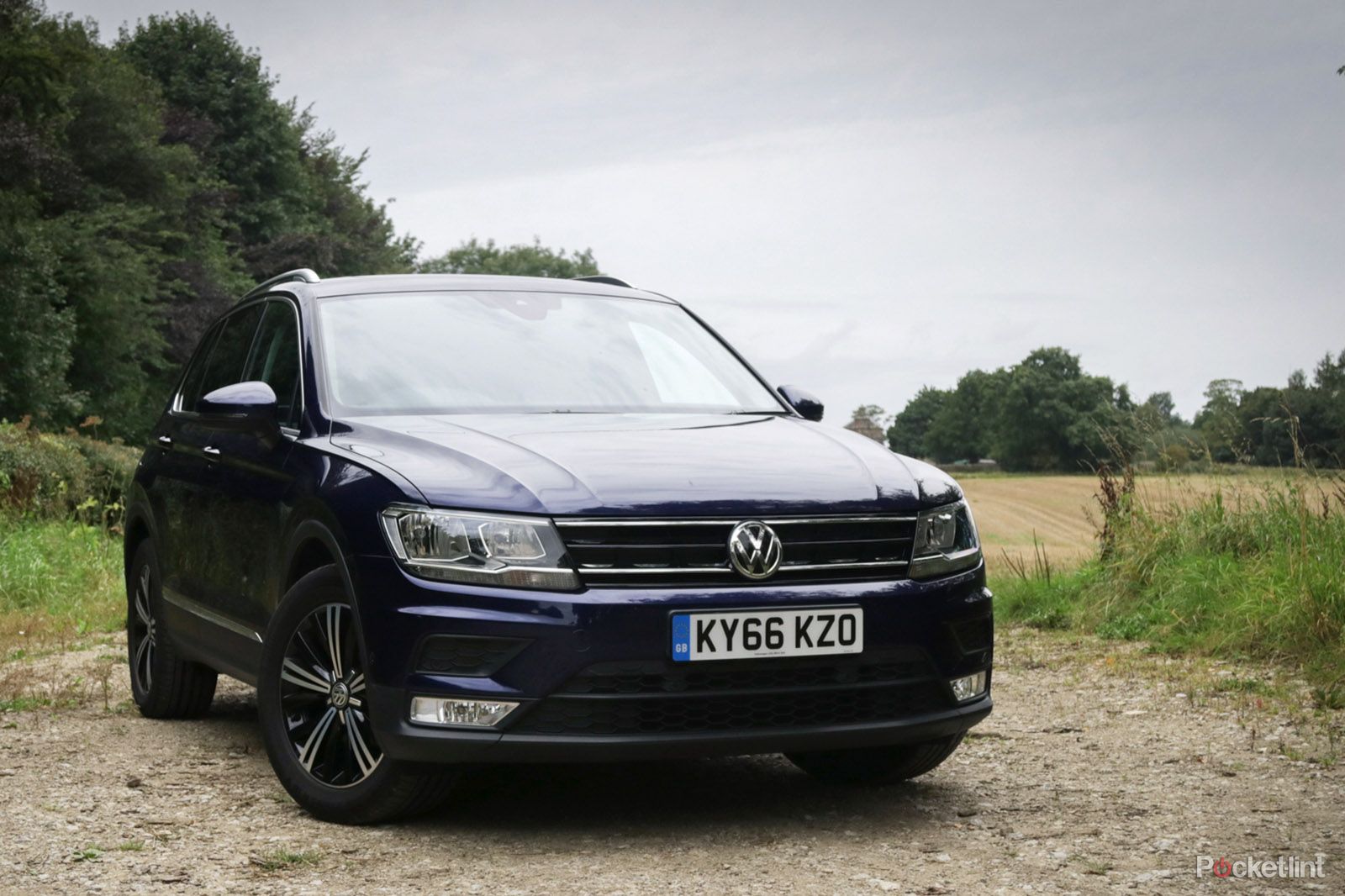
Volkswagen Tiguan - 4.0 / 5
| FOR | AGAINST |
|---|---|
|
|
Debuting in mid-2016, this is the second-generation Tiguan. The last-gen sold well (1.8 million since 2007), and the new one builds on solid foundations.
The new Tiguan now sits on VW's MQB platform — the high-tech kit of parts that underpins the Golf, Audi A3, Seat Ateca and numerous other small and mid-sized car from the VW group. Which is a good thing, because the last Tiguan, for all its sales success, looked more than a little gawky. The interior lacked the quality you'd expect from a Volkswagen, and it drove with little panache. The new one changes that, largely thanks to this MQB platform.
The Tiguan is available with a range of diesel and petrol engines, in front-wheel or four-wheel drive, and you can get most models with VW's DSG automatic gearbox. And at some point it'll also come as a plug-in hybrid GTE version. Be warned, however, that speccing one is going to be a complex business.
A better looking SUV than its predecessor
It might have a familiar Volkswagen appearance to it, but there's no denying that, both literally and metaphorically, the new Tiguan is much sharper looking than its predecessor. It is generally bigger — longer, wider and slightly lower — which makes it look meaner and much more of a full-on SUV on the road. The sharply surfaced body with tight radii and crisp panel gaps helps. As does the new, more linear design of the car's face. Despite being lower than the car it replaces, you sit 8mm higher up than before, giving you a more commanding view of the road, which is one of the reasons people like this kind of car.
Because it now looks the part, has more space and is better equipped, VW has pushed the Tiguan upmarket. Not fully into Audi and BMW space (the spec sheet shows that, model for model, the new car is only a few hundred pounds more expensive than before), but it starts at £22,510 and rises all the way to north of 36K — which is well into premium SUV territory.
So where does that place the Tiguan? Is it a killer of the Nissan Qashqai, or more of a challenger to the premium SUV throne? Or is it simply lost in no-man's land — made to look expensive by the raft of new, cheaper crossovers and SUVs, such as its in-house cousin, the Seat Ateca?
How much space is there in a Tiguan?
One of the ways VW has taken the Tiguan upmarket is by physically enlarging it. It feels like an SUV; a slightly bigger, butcher and more serious car than before, and one that's half a size above the likes of the best-selling Nissan Qashqai.
It's still perfectly manageable to drive of course — at 4.5 metres long, it's shorter than a BMW 3 Series or Volkswagen's own Passat. But the Tiguan's boot is a generous, family-friendly size of 615L when the rear seat bench is slid forwards. Alternatively, you can give rear passengers tonnes of legroom and still have a very generous-sized boot space.
This is one of the main advantages of the Tiguan over its cousin, the Seat Ateca. Despite being based on the same platform it is bigger and feels it, especially in the back seat where there's a lot more room.
We stuffed the Tiguan full of a family and all our two lots of baby gear for a Bank Holiday weekend away with friends, and the Tiguan didn't make us miss our estate car once. In fact, with the addition of a slew of new cubby holders in the cabin — one on the dash-top, another couple on the dash face, a big centre bin and adjustable cup holders and ones under the seats — the Tiguan is well setup for family life and all the clutter you'll carry with you in the car. Shout out to the rear picnic tables too — these fold up from the backs of the front seats — and have a pop-out drinks holder, and also a 45-degree stop position, which means they're ideal for holding a tablet.
Tech, Nav and Active Info Display
Inside, Volkswagen has moved things on significantly from the last model. Gone are the quadruplet of round air vents, and in comes VW's neat, 8-inch touchscreen — which delivers an 840 x 480 resolution, includes a proximity sensor, and features sat nav as standard if you choose an SE Nav specification Tiguan, or above.
Go for an SEL version or above and you'll get the VW group's 12-inch digital cockpit too (or Active Info Display, marketing fans). We've driven three Tiguans — an SE Nav version (the likely best-selling version) which didn't feature the digital cockpit; another one which did (and the basis of our review here); and the top-of-the range R-Line, which also had it.
The display allows you to pick from various modes. You can never get the digital dials for speed and revs to disappear (missed opportunity there, VW), but in the centre of those dials it allows you a central ring of info, which you can change to show speed, gear selection, off-road info, driving efficiency, and so forth. And between the dials there's a bank of information, which you can use the steering wheel buttons to change between the radio, display trip data, or show the sat nav.
It's the sat nav mode that's most interesting, because the map takes over the centre of the screen and the dials do actually shrink down in this mode. It's great in the day, and from the driver's seat, makes interacting with the centre screen pretty much redundant. But at night, we found the brightness of the map overbearing, so selected another function on the display, to avoid being bathed with so much light from the cluster.
VW refers to its approach regarding efficiency and technology on-board as "guide and inform" and in our drives of each car that sums things up pretty well. For now (at least) we also like the fact that the Tiguan has the bigger centre screen, but retains the physical shortcut keys and knobs for adjusting volume and zoom. By sticking with physical buttons, the setup doesn't look as modern as the new, all-touch display in the facelifted Golf. But we find this older, more haptic approach far more user-friendly on the move. However, we'd expect VW to start fitting the new, button-less screen fairly soon, so be aware that this last point may become redundant.
The Tiguan's infotainment system doesn't have the ultimately connected, remotely controlled cleverness of an Audi or BMW. But it is fast, relatively intuitive and easy to use. Whether you really need the Active info display digital cockpit, though, is a tricky question. It's lovely to look at, yet a novel tech feature. VW's traditional dials are so crisp and clear already, that at times it feels like overkill — and there are so many display options, we found it becoming a distraction because we literally couldn't choose what we wanted to look at. Note that if you select an SEL or R-Line Tiguan, you've no choice but to have it.
Diesel or petrol?
One of the biggest decision you'll need to make with the Tiguan is whether to go for a petrol or diesel engine. Many people have defaulted to a diesel motor with this type of car — diesel's characteristic of low-down torque and good mid-range power suiting the extra weight that SUVs tend to carry around. But compared to some other brands, VW's giving you genuine choice — and reason to pause — before defaulting to diesel, because the petrol engine options are numerous, and good.
The diesels come in 110, 150, 190 and 240hp versions. The ubiquitous, 150hp 2.0 TDi is all you need, and if you're worried about the whole diesel thing, know that this is a new unit, introduced with the MQB platform that the Tiguan sits on — and which features an AdBlue exhaust treatment system, which should sort out those pesky NOx issues.
The diesel suits the Tiguan's demeanour well and copes well with its weight and size. The 150bhp gets to 60mph in 9.3-seconds, and even with us thrashing it on a test route, it gave us around 50mpg.
However, if you're driving less than 15,000 miles per year we'd suggest having a look at the petrol models — these come in 125, 150 and 180hp versions, and our review car came with the 150hp, 1.4 TSi format, with active cylinder deactivation. We loved this unit in the Seat Ateca, and it's the same story here: it's got enough power to cope, in most cases, while being very smooth and refined, yet happy to rev out.
The cylinder deactivation technology kicks out a couple of cylinders when you lift off the throttle, and you'll need to have superb hearing and have the radio off to realise the deactivation is happening, because otherwise there's little to notify you beyond a little 'eco' symbol that lights up on the dash. The 1.4 returned just over 40mpg over 500 miles, although much of that was on motorways.
The Tiguan is not quite as fun as the Seat Ateca – the extra size and weight of the VW blunts performance a little, but the 1.4 is still game enough and well-suited to this car, and VW's about to upgrade it to its new 1.5 version, which has the same horsepower but should be even more efficient, and a little quicker.
The tougher questions you'll need to answer on the drivetrain front are whether to go with four-wheel drive (available on most models, and over 50 per cent of buyers do opt in), and whether to stick with a manual or go for the 7-speed DSG automatic. DSG and four-wheel drive give you an ultimate ease-of-use, get-anywhere vehicle, but you'll pay around £1,700 more for four-wheel drive, and £1,500 on top of that to go DSG. So there's a chunky price to pay to step up from a front wheel drive, manual Tiguan into a four-wheel drive automatic one.
Which VW Tiguan spec should I choose?
Our review car — a manual gearbox, front-wheel 1.4 TSI ACT Tiguan in SE Nav spec — comes in at £25,985. For the 2.0 TDi in SE Nav spec — with four-wheel drive (4Motion) and DSG Auto box — Volkswagen will want £31,235 (lose the four-wheel drive and auto box in the same spec, and you'll only need £28,035).
SE Nav specification will give most of what many people need, in terms of equipment. 18-inch Alloys, sat nav, CarNet (which means you can use Apple CarPlay and Android Auto, DAB, Bluetooth and front and rear parking sensors).
SEL is a nice mid-step up if you've got a bit of extra cash and fancy a few toys above SE Nav. It adds 19-inch alloys, LED headlamps, a panoramic roof, ErgoComfort seats, adaptive cruise control and the digital display cluster — all of which the SE Nav does without. The SEL costs around £1,500 more than an SE Nav spec car, in most engine combinations, which means if you're looking at adding a couple of these options to an SE Nav model, it's more than worth upgrading to SEL.
R-Line takes things sportier, blingier and fancier. It adds 20-inch alloys, a body kit with gloss detail and leather upholstery. To many people's eyes, this is the best looking Tiguan — but the price gets a bit full-on for this size of car.
Our review car came with a series of options which bloated the price. We don't think the Tiguan needs dynamic chassis control (£810), having driven a few versions. Our car also had keyless entry and an electric tailgate (£660) which was a nice-to-have with the family in tow rather than an essential, and the Active Info Digital Display (£590).
How does the new Tiguan drive?
Out on the road, the Tiguan drives like a much more grown-up car than before. In fact, the biggest compliment we can pay it is to say it feels very car-like, with the exception of you sitting higher up.
The Tiguan feels solid, is extremely quiet, refined and rides very nicely on the smaller wheels of the SE Nav. The 20s on the R-Line don't kill the ride, but they do make it notably busier. In all models, the factor that jumped out most markedly compared to the previous version was the way the car cornered: this is now a much smoother and more composed car to thread along a country road. It's refined and stable on the motorway and while it's not the last word in fun, it's not un-enjoyable to drive. Everything you touch is slick, the ergonomics are good, the gearshift is light, as is the clutch, while the steering is nicely weighted.
It just lacks the fun and vim that the Seat Ateca has. In some ways the Tiguan feels more grown up, but it's also, surprisingly, significantly duller. By comparison, the Ateca feels like a hot hatch. To the point that if you don't need the extra space of the Tiguan, and enjoy your driving, we'd pick the Ateca every time.
To recap
Volkswagen updates the Tiguan and it's better than ever — to look at, sit in and drive. Neatly feels a cut-above the mainstream crossover models which cost a few grand less, meaning if you want a more premium experience but don't want to spend big on an Audi, this is a strong option

